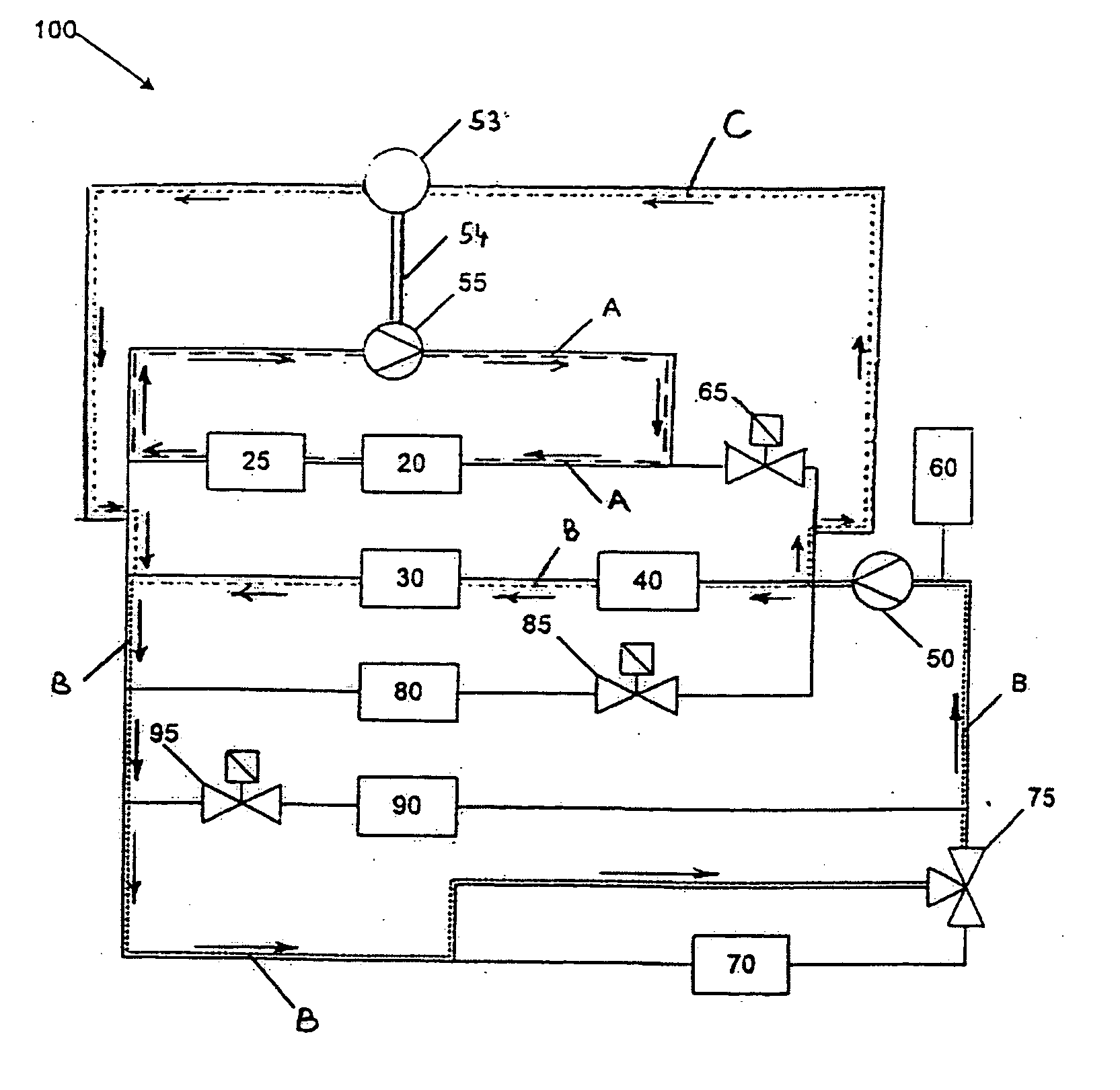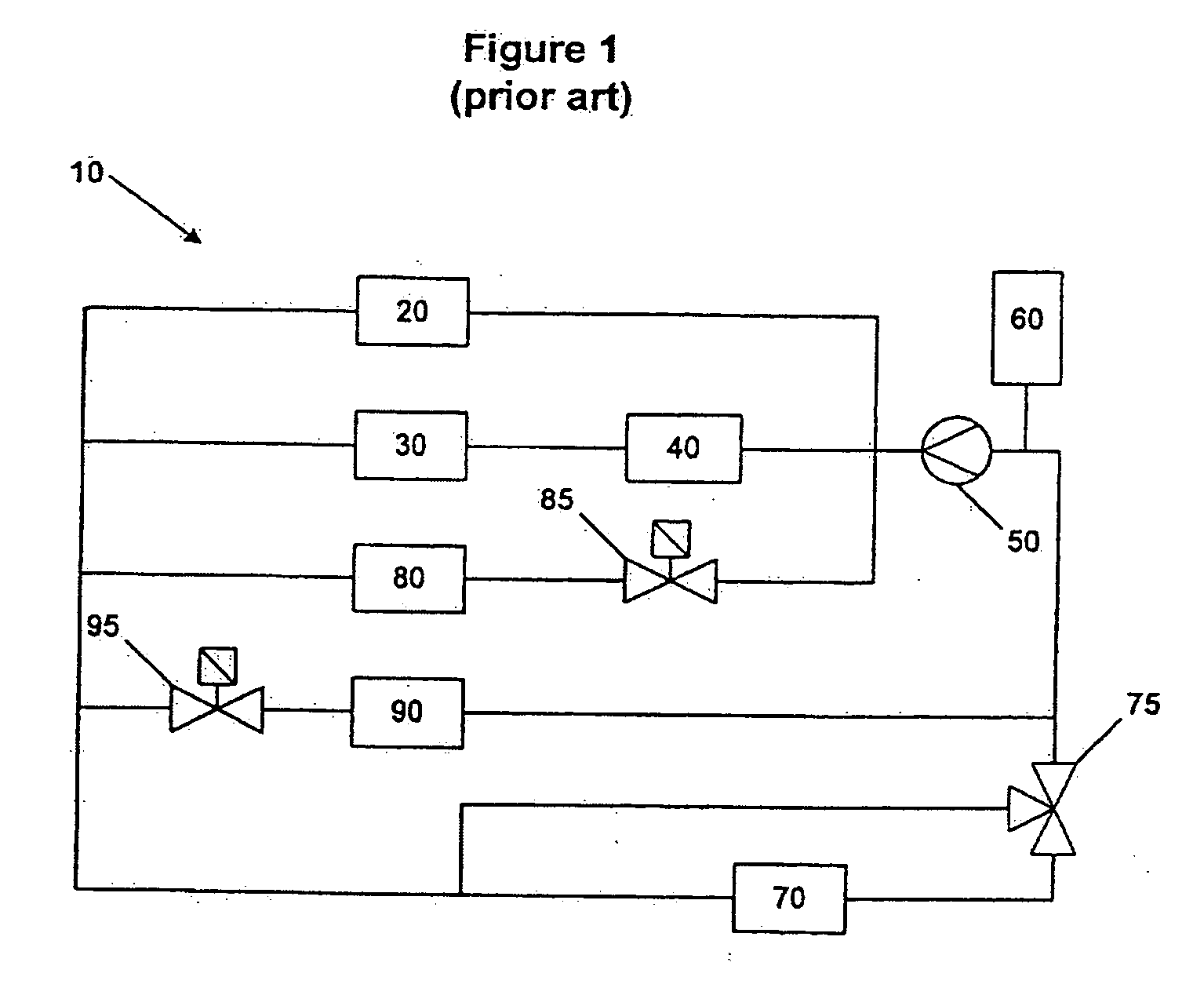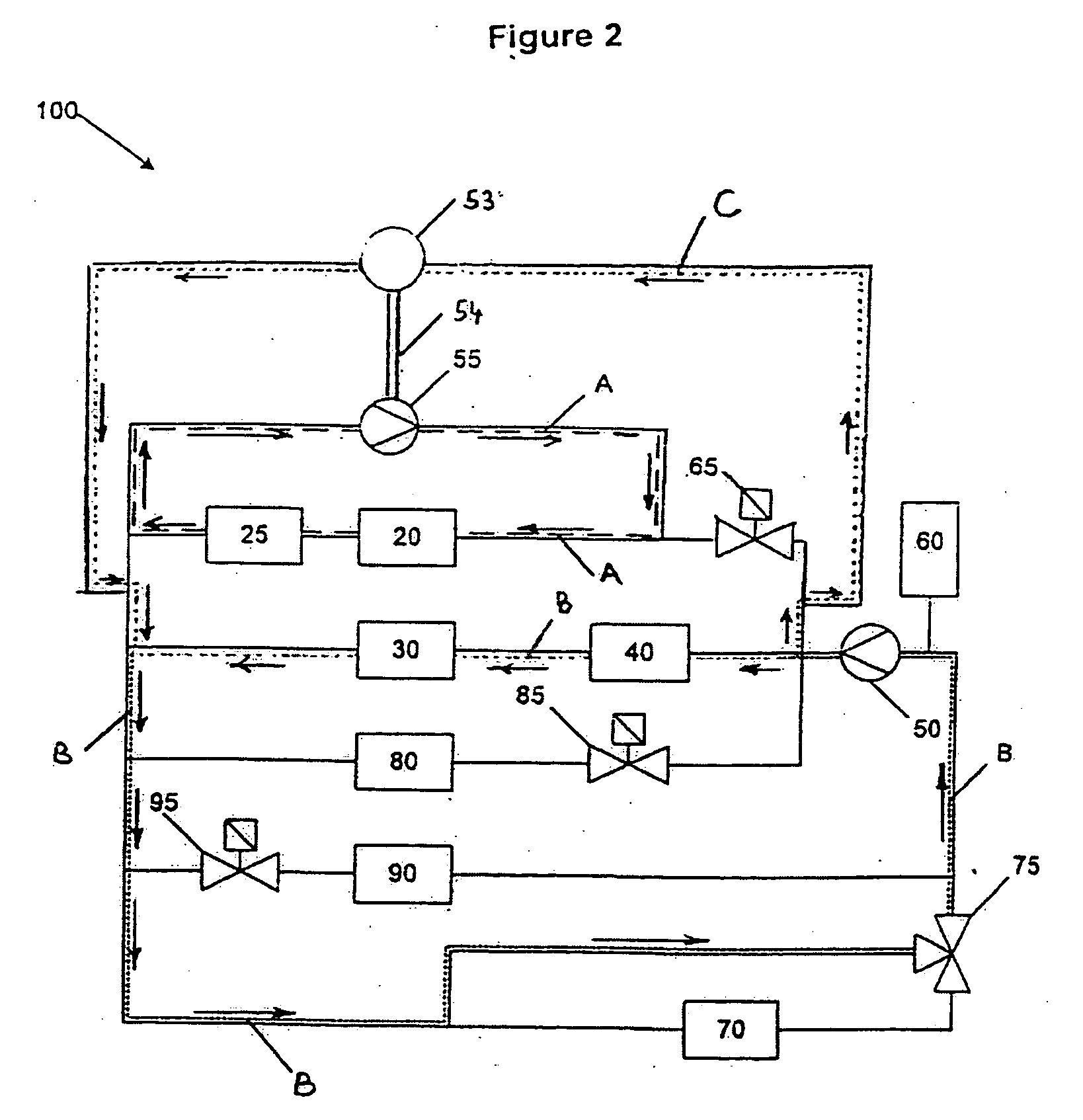Passive microcoolant loop for an electrochemical fuel cell
a fuel cell and microcoolant technology, applied in the field of electrochemical fuel cells, can solve the problems of local heating within the stack that could adversely affect the stack, and achieve the effect of reducing the amount of coolant and reducing the percentage of coolant recirculation in the coolant loop
- Summary
- Abstract
- Description
- Claims
- Application Information
AI Technical Summary
Benefits of technology
Problems solved by technology
Method used
Image
Examples
Embodiment Construction
[0023]FIG. 1 is a schematic of a conventional prior art electrochemical fuel cell system coolant subsystem 10. Electrochemical fuel cell system coolant subsystem 10 may comprise a pump 50 fluidly connected to a fuel cell stack 20, a compressor 30, a cathode feed heat exchanger 40 and a coolant reservoir 60. Coolant from coolant reservoir 60 can then be circulated through fuel cell stack 20, compressor 30 and cathode feed heat exchanger 40 to assist with temperature regulation of these components. In particular, with respect to compressor 30, temperature regulation of the compressor motor and the compressor inverter (not shown) may be desired, either individually or together. Temperature sensors (not shown) may measure the temperature of fuel cell stack 20 and / or the temperature of the coolant circulating through electrochemical fuel cell system coolant subsystem 10. The electrochemical fuel cell system coolant subsystem 10 may also comprise a radiator 70 and a radiator valve 75. Onc...
PUM
| Property | Measurement | Unit |
|---|---|---|
| temperature | aaaaa | aaaaa |
| temperature | aaaaa | aaaaa |
| temperature | aaaaa | aaaaa |
Abstract
Description
Claims
Application Information
 Login to View More
Login to View More - Generate Ideas
- Intellectual Property
- Life Sciences
- Materials
- Tech Scout
- Unparalleled Data Quality
- Higher Quality Content
- 60% Fewer Hallucinations
Browse by: Latest US Patents, China's latest patents, Technical Efficacy Thesaurus, Application Domain, Technology Topic, Popular Technical Reports.
© 2025 PatSnap. All rights reserved.Legal|Privacy policy|Modern Slavery Act Transparency Statement|Sitemap|About US| Contact US: help@patsnap.com



